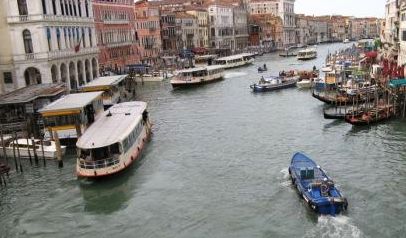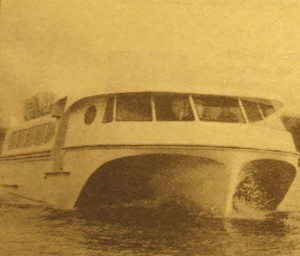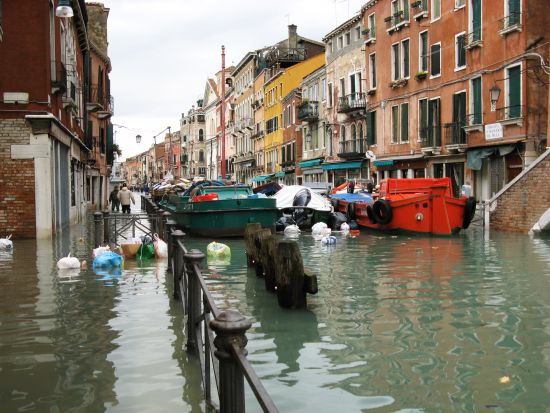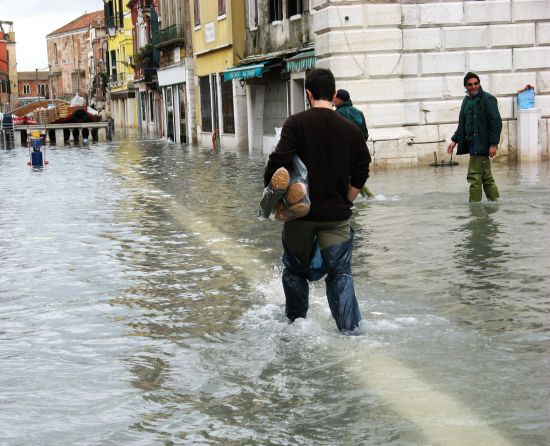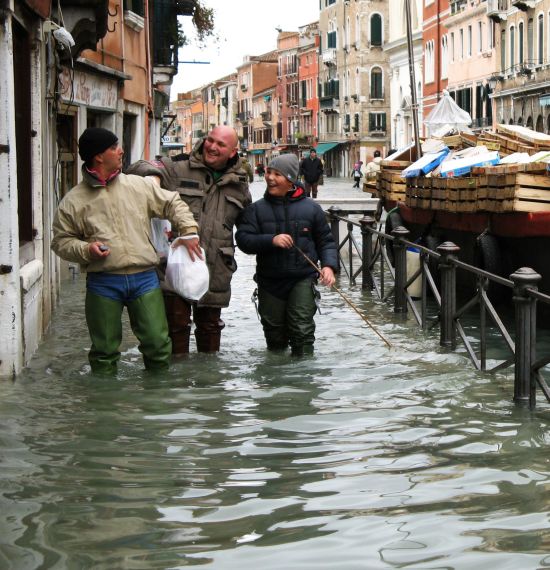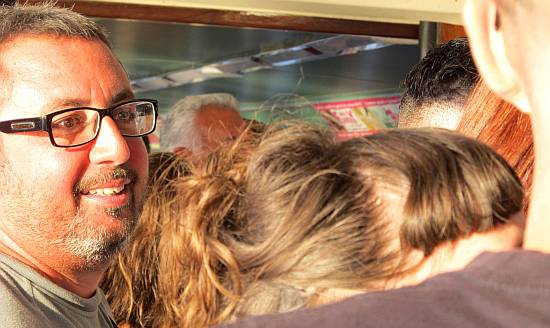
It’s a glorious spring morning, the sun is coruscating and the breeze is cool and the world is clean and happy. Naturally I’d have to be going to a funeral.
By now I’ve gone to plenty of funerals, but they’ve always been people that Lino knew, whether I had made their acquaintance or not. I’ve been here long enough now to go to funerals of my own.
Her full name was Countess Alma Lippi-Boncambi Messe di Casalpetraia. I called her Signora Alma and had long since forgotten that she was a countess. At the point I came to know her she was in her late 80s, and had accumulated enough physical problems that she needed a live-in, full-time caretaker: my friend and matron of honor, Anzhelika.
A few years ago she finally had to be installed in a long-term-care hospital (or whatever they’re called; it could have been a nursing home except that it seemed like a hospital to me). At that point Anzhelika had already planned a six-week trip home to Ukraine and was urgently seeking a temporary substitute to tend Alma from 10-12:30 and 3:30-6:30 every day except Sunday afternoon. I volunteered, and this became an annual engagement. Last year I did this from January to August (time reduced to the afternoon only).
By then, of course, Signora Alma was loaded with what Italians call acciacchi (ah-CHAH-kee) — which literally means “afflictions,” but which usually refers to everything from a chronic cough to a bum knee, a bruised rib, extreme bunions, osteoporosis, cataracts, and so on. In short, physical deterioration which is assumed not to be fatal in itself but which degrades your life in various ways. I won’t list her assorted acciachi here because I don’t think any one of them carried her away, it was all of them together. And besides, her extraordinary forceful character pushed her acciacchi up against the wall, where she told them to sit still and be quiet, except when she wanted to be pampered and coddled and there-there’d.
She was born in Trieste, the only child of older parents who were extremely unhappily married, slept in separate bedrooms and rarely spoke to each other. Her mother was jealous, suspicious, and domineering, and also psychopathically possessive. She accompanied her daughter to school every day till Alma entered the University of Padova, but there she merely waited at home for her, watching the clock.
Alma’s salvation was her brain. By the time she was 13 she was already tutoring students in Latin, and making good money. She earned her doctorate degree in literature at the age of 22. She made a career of private instruction in Latin and Greek, following her own particular method which was clear, rigorous, and effective, as her former students attest. They also attest to her total lack of tolerance for ignorance, verbal clumsiness, mental blundering, uncertainty, approximation, and any intellectual or personal trait that wasn’t first-class.
I know this because I was in her cross-hairs every day. My mistakes in grammar would exasperate and even enrage her; I would come home exhausted from what amounted to private tutoring by a Marine drill sergeant. She forbade me to speak in Venetian; it had to be the language of the divine Dante, or nothing. She couldn’t believe I couldn’t get rid of my American accent — I guess she thought it was either laziness or stupidity on my part, but she didn’t comment often, thank God. Though there was the time she was feeling poorly, and I asked if she’d like for me to read to her. “Per carita’!” she blurted, which in this case meant something like “Heaven forfend!” That stung.
My duties weren’t merely to keep her company. Her left arm was essentially useless at this point, so in the early days I bathed her eyes with boric acid, and wrangled her dentures — taking them out, scrubbing them, gluing them back in her mouth — and feeding her when she was laid up with one of her spells. It took years to learn how to put her glasses on JUST RIGHT.
But gradually we created a friendship. She loved to talk about books, music and travel, and the hospital didn’t contain anybody who knew or cared about any of it. I even made her quirks work for me. If I wanted to rouse her from one of her occasional afternoon torpors, I’d deliberately make some grammatical error and she’d leap to life, eyes aflame, like an old warhorse who had suddenly heard the distant trumpet call. It was fabulous — it never failed. But unfortunately I made plenty of inadvertent mistakes and not a single one ever got a pass. When the last grim shades of senility close my brain down forever, the last thing flickering in there will be the words “lo scialle” — the shawl. I screwed that up often enough to drive her one day to shout it at me. That was an exciting and effective moment.
One of her greatest passions was for the classic Italian novel, “I Promessi Sposi,” by Alessandro Manzoni. She nagged me for most of one year’s stint to read it. It wasn’t a request, or a suggestion, it was an order. I finally started the book just to get her to quit hounding me. After the first page, I was hooked. And we had finally found a real connection.
When we went downstairs in the morning for a cup of hot chocolate from the vending machine, she would ask me how far I’d gotten, and we’d talk about the characters and what they were up to. Then I’d start asking her to explain certain words to me. I could have used the dictionary, but she was better, because she understood the nuances of words that nobody uses anymore, and could explain them with clarity and with pleasure. I was happy because I was learning so much, and she was happy because she was teaching again. And we were both crazy about this book. When I’d leave in the evening, she’d sometimes say, “Wait till you see what happens next.” It was better than TV.
We did watch a lot of TV in her room in the winter afternoons; she liked police crime programs, most of them German, dubbed in Italian. She liked documentaries, and she loathed cooking programs. In the summer, we spent most of our time outside in the garden. We’d sit under the trees and play infinite rounds of scopa, an Italian card game, and smoke cigarettes. Neither one of us inhaled; it was just something she liked to do. It was like we were teenagers, pretending. In the winter, when she was stuck inside, we’d quit.
Unfortunately for me, she had begun to forget a lot of particulars that would have interested me about her life. But sometimes she’d startle me with a gem.
Knowing that she had grown up in Trieste, I asked her casually one day — grasping for a topic — if she could hear the bells of San Giusto from her house. There is a famous song called “La Campana di San Giusto.” For those who don’t see the clip below, here’s the link: http://youtu.be/MmPGTB7igLs
“No,” she replied; “I could hear the firing squads.”
Excuse me? “I would lie in bed in the early morning and listen to the firing squads.” I counted backward. The Fascist dictatorship took power in 1925, when she was four years old. A little girl could easily have heard the sound of organized reprisals in the dawn. Gad.
Then there was the episode of the laurel wreath. When she graduated from the University of Padova, she was awarded a genuine laurel wreath according to the custom in the Veneto and Friuli. Naturally she was very proud of this, and hung it on the wall in the living room, carefully wrapped in its original cellophane. Time passed. Sometimes she’d glance at it and think, “Strange….my wreath seems to be thinning out somehow.” By the time there were almost no leaves left on it, she asked her mother if she knew what might be happening.
“You’ve been eating them,” her mother replied. “In the beans.”
What could be simpler? Every time her mother cooked some fagioli, she’d take the necessary laurel leaves from her daughter’s hard-won victory crown and toss them in the pot. I did mention that her mother was borderline.
Alma married late, had no children, and was widowed early. She lived in Perugia with her husband till he died at her feet of a heart attack, at which point she returned to Venice — or rather, the Lido. She began to fall too often; there were the bedrails, the canes, the walker, the wheelchair, the emergency room, the nursing home, the end.
If I get to meet her in heaven, we’re going to sit in the shade and she’ll beat me at scopa because she always draws the king, drat her. And we’ll talk about what a sleazebag Don Abbondio was, and I’m going to show her I can finally say gli.

Ciao Alma…and you answered me, I love you very much.
You had a very eventful life.
You were born in Trieste. In ’42 the degree in literature at Padova at only 22 years old.
Then Venice, the teaching, the care of your parents, and when you were left alone, the trips, many trips.
To reach another level you moved to Perugia, and you met Carlo, the companion you had always longed for, but after only a few years you were left alone again.
You came back to the Lido, and again many trips, with me and your friends.
After the last trip, to China, on your return you said, “That was the last one.”
Then the Third, and the Fourth Age, and unfortunately the nursing home.
You were a severe teacher; your students, when they grew up, came to appreciate your efforts.
And Angelica, who helped you with affection and dedication, an angel who came from Ukraine.
And then…. then you surrendered.
Ciao Alma….I love you so much too.
Bon voyage (“buon viaggio”).


